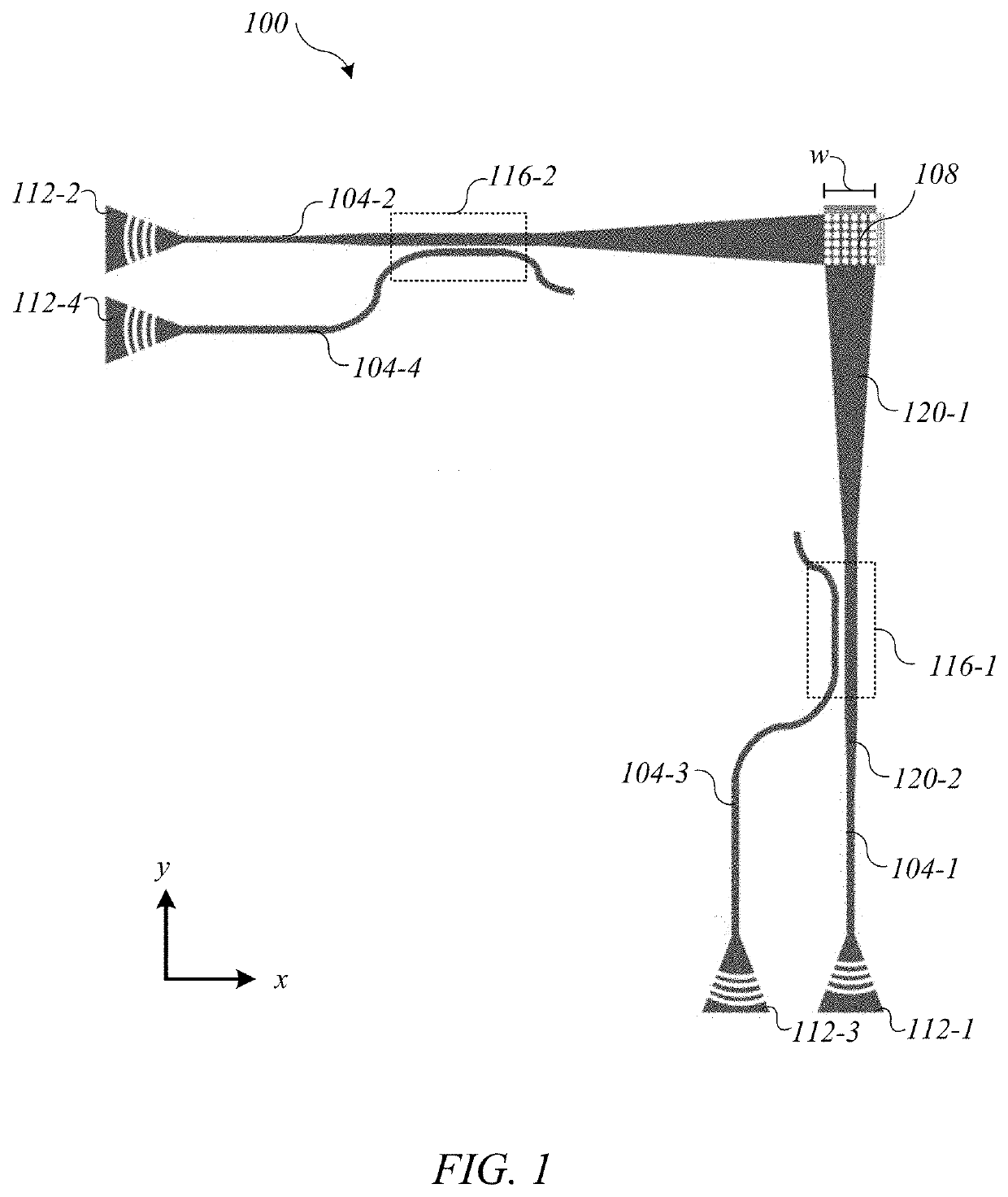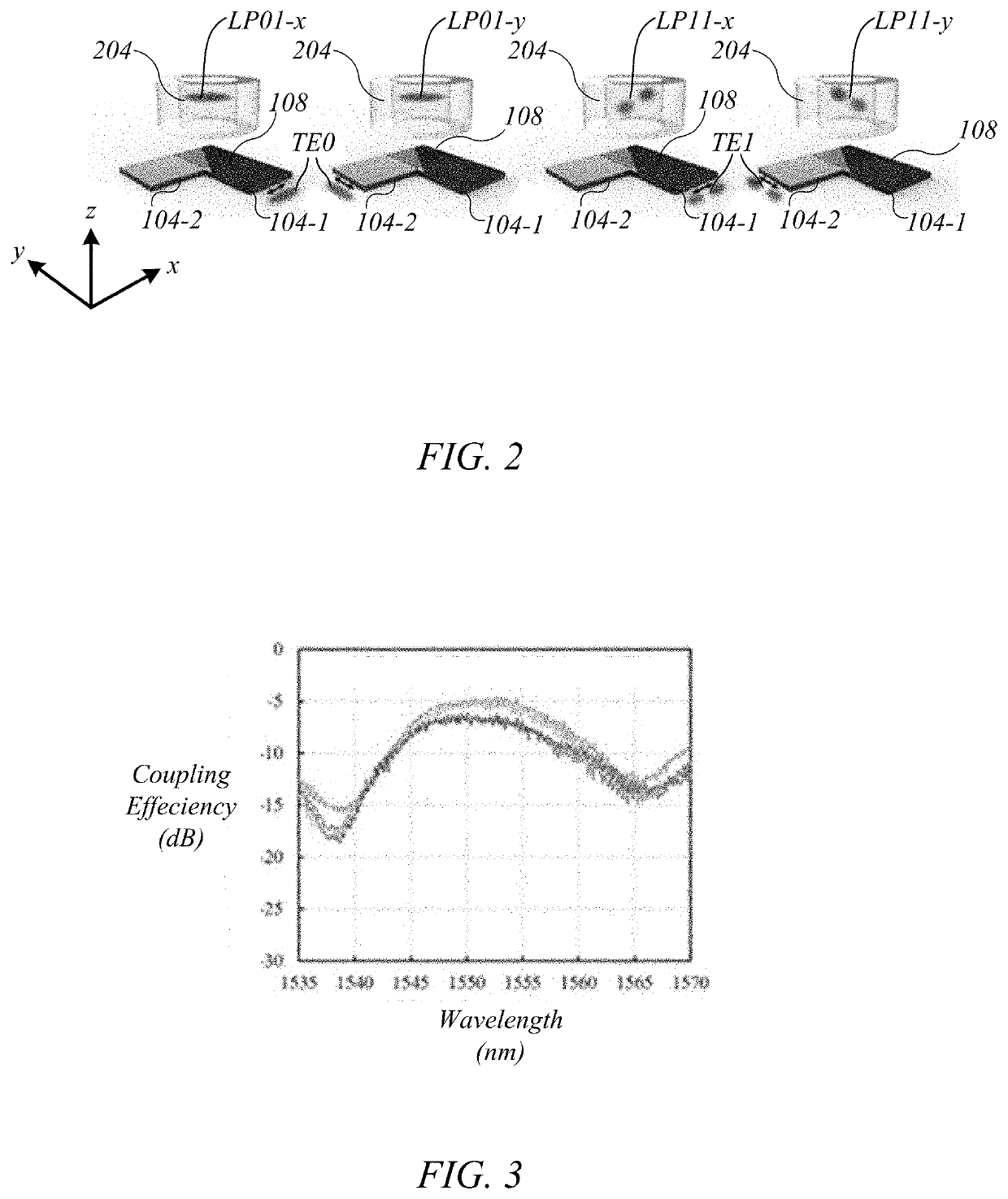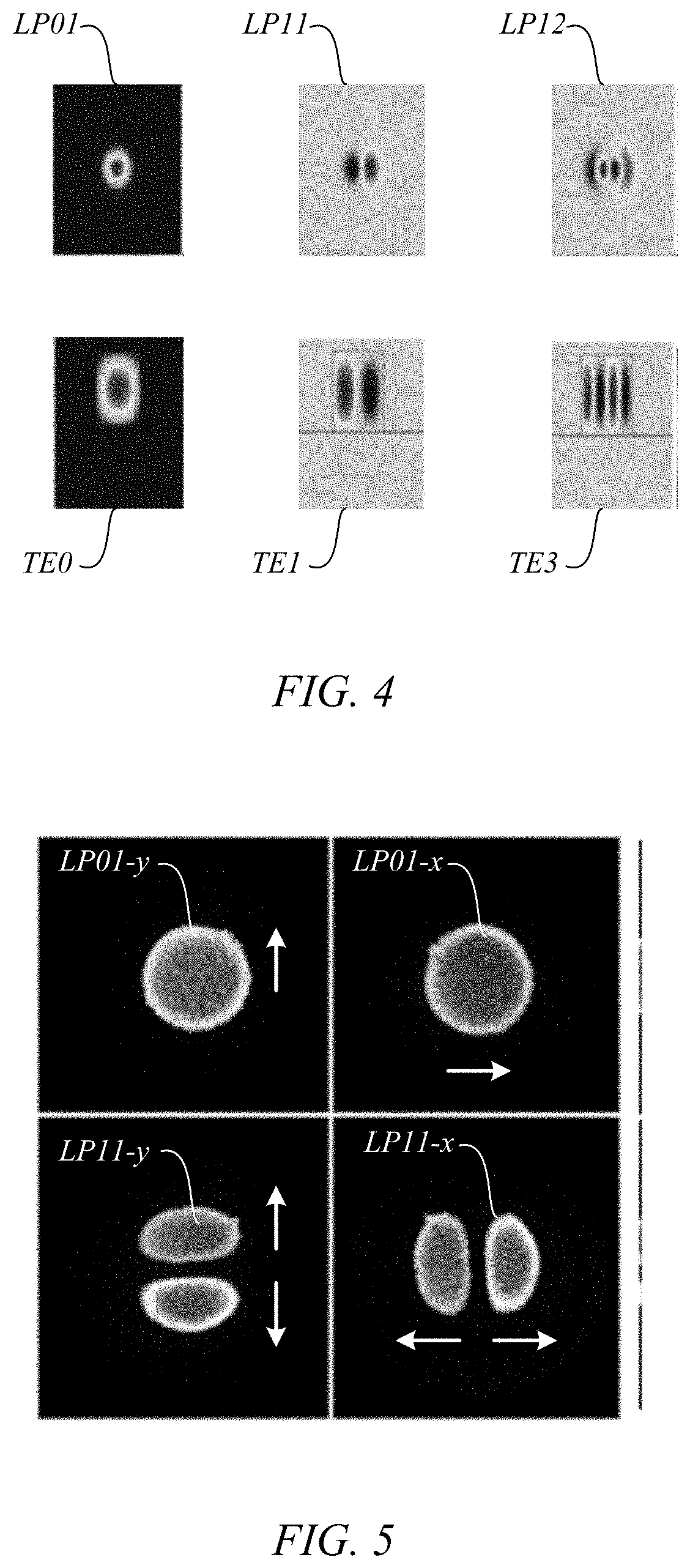Multimode waveguide grating coupler
a waveguide and coupler technology, applied in the direction of optical waveguide light guides, instruments, optical elements, etc., can solve problems such as limited performance, and achieve the effect of increasing the communication bandwidth of optical fibers
- Summary
- Abstract
- Description
- Claims
- Application Information
AI Technical Summary
Benefits of technology
Problems solved by technology
Method used
Image
Examples
example process
VI. EXAMPLE PROCESS
[0083]FIG. 11 depicts an embodiment of a flowchart of a method 1100 for spatial multiplexing. Method 1100 starts in step 1104 with coupling a first optical beam into a first waveguide. The first optical beam can be coupled into the first waveguide so that the first optical beam propagates in a fundamental mode of the first waveguide. For example, a first signal is coupled into the first waveguide 104-1 through the first input 112-1 in FIG. 1.
[0084]In step 1108, a second optical beam is coupled into a second waveguide. The second optical beam can be coupled into the second waveguide so that the second optical beam propagates in a fundamental mode of the second waveguide. For example, a second signal is coupled into the second waveguide 104-2 through the second input 112-2 in FIG. 1. The second waveguide is orthogonal to the first waveguide.
[0085]In step 1112, a third optical beam is coupled into the first waveguide. A first asymmetric directional coupler can be use...
PUM
| Property | Measurement | Unit |
|---|---|---|
| width | aaaaa | aaaaa |
| width | aaaaa | aaaaa |
| diameter | aaaaa | aaaaa |
Abstract
Description
Claims
Application Information
 Login to View More
Login to View More - R&D
- Intellectual Property
- Life Sciences
- Materials
- Tech Scout
- Unparalleled Data Quality
- Higher Quality Content
- 60% Fewer Hallucinations
Browse by: Latest US Patents, China's latest patents, Technical Efficacy Thesaurus, Application Domain, Technology Topic, Popular Technical Reports.
© 2025 PatSnap. All rights reserved.Legal|Privacy policy|Modern Slavery Act Transparency Statement|Sitemap|About US| Contact US: help@patsnap.com



